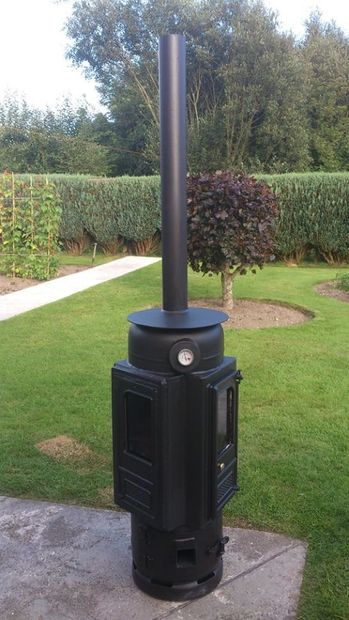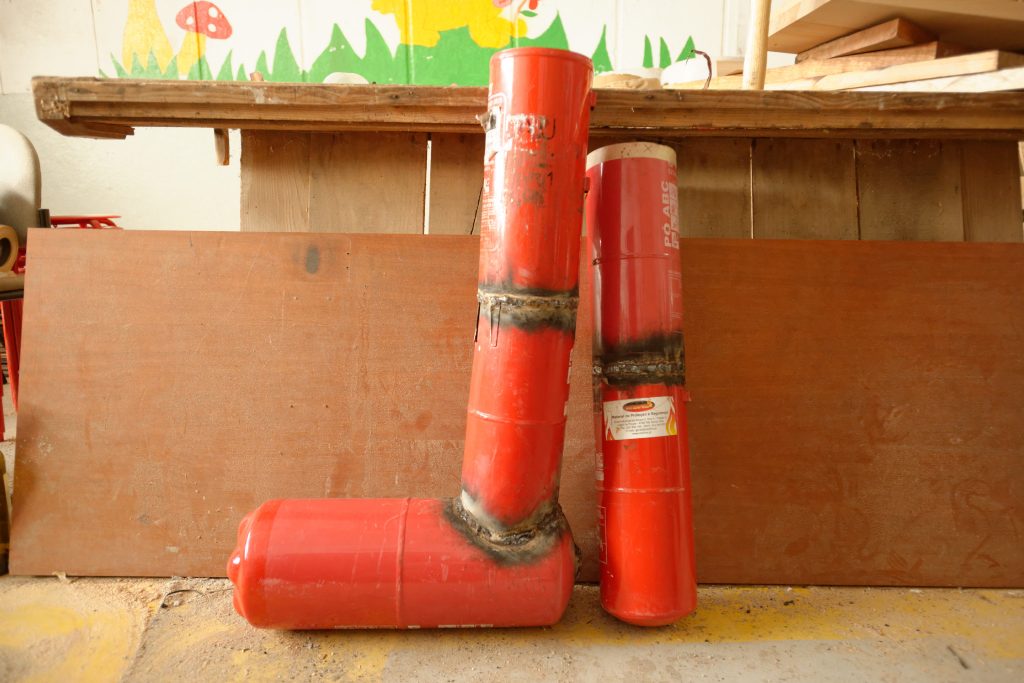DIY Wood Stoves
Winter is here. If you’re ready to take on the challenge of creating your own heating system, it’s is time to overview some DIY wood stoves techniques.
The optimal choice for a type of heater depends on contextual variables; size of the space to be heated, climate of your environment, available materials, timespan and costs to build the heater, its running costs and environmental sustainability.
Before introducing different types of heaters, it is important to know the following four elements that every wood stove comprises;
- The hole where the fuel is inserted is called the feeding hole.
- The space in which the reaction between oxygen and the fuel take place under a high temperature is called the combustion chamber.
- An important concept for heaters is “thermal mass”. The thermal mass of a material is its resistance to the change of temperature as heat is added or extracted. The bigger the thermal mass of the stove, the more gradually it will release heat, and the less temperature differences within a space during the activation of the stove. Low mass heaters are more responsive, and thus more suitable for variable climates where quick or short heating is required. However, low mass heaters are less energy efficient. Typical materials for stoves with a high thermal mass are vermiculite, sand, clay bricks, rammed earth, natural stones, etc.
- Every stove requires a chimney to lead the gasses exhaustion (mostly CO2).
The energy efficiency of a stove depends on the quality of the combustion process and the temperature of the smoking gasses that leave the chimney. Some heaters are more energy efficient than others due to the dimensions and shape of the combustion system, or thermal mass of the stove. Firstly, it is important to choose a type of heater that fits your needs, and then you can tweak several of the latter aspects to turn it into a more efficient heating system.
Metal stoves
This is the most basic design of wood stove; the combustion chamber and feeding hole function in one space, which is directly connected to the chimney. These stoves are typically made out of metal elements, iron or cast iron.
The simple iron ones heat faster, but are less efficient than the cast iron ones, that are capable to keep the heat for longer, even after extinguishment of the fire, and thus act as a thermal mass.
Tons of tutorials can be found about this type of stove, because of the easy materials required, which are mostly old gas bottles.
See these pretty cool instructables about gas bottles converted in wood stoves:
http://www.instructables.com/id/CNG-tube-salamander-stove-salamandra-de-tubo-GNC/?ALLSTEPS
http://www.instructables.com/id/Gas-bottle-log-burner/?ALLSTEPS
http://www.instructables.com/id/Gas-Bottle-Wood-Burner/?ALLSTEPS
Perfect context
Heating distribution is limited to the space in which the stove is located.
Due to the low thermal mass comprising the stove, the environment is heated quickly, but also cools down quickly. Therefore it is most suitable for unsteady climates or for rooms that need only a short period of heating.
Efficiency
The gases that leave the chimney are very hot, so a part of the heat escapes without being used, making the stove not very energy efficient. Isolating the combustion chamber makes it much more energy efficient. This addon is not rare on high standard market iron stoves.
Difficulty level
Generally easy to make if you have some metalworking skills.
Required materials
Metal, iron, old gas bottles, insulation material such as vermiculite (optional)
Example of stove design made out of recycled materials
Source:
example of stove design (with quite cool air circulation!), Source: http://www.fhtstoves.com/
Rocket Stove
An efficient tweak to the shape of a metal stove results in a rocket stove; its main characteristic is a J-shaped tube. The lowest opening of this J-shape functions as a feeding hole (see figure 2). The 90 degree angle in the tube ensures that the heat from the wood in the feeding hole is drawn up into the combustion chamber. When the fire is burning, the combustion chamber sucks fresh air through the feeding hole, prohibiting possibilities of back draft.
Rocket stoves, like rocket mass heaters, are a simple concept heavily customisable. From the starting point design, one can quite easily generate vortex within the riser, to improve the combustion, or foster the creation of a double (or post) combustion, with a second air entrance.
Perfect context
Heating distribution is limited to the space in which the stove is located. The stove is often used for cooking purposes, because the heating is channeled vertically.
Efficiency
Extremely efficient in terms of use of resources due to the geometrical relation between the feeding hole and combustion chamber. Capable to run only with scrap wood.
Required materials
Can be constructed using inexpensive materials like old barrels, pipes, clay, brick and diverse isolation materials.
Difficulty level
Generally easy to make if you have some metalworking skills.
Rocket Mass Heater
The rocket mass heater is an extension to the rocket stove, also incorporating a J-shaped feeding hole. Another principle of this heater is the U-shaped combustion chamber that is covered by a large thermal mass, ass, like for instance vast earth, bricks or any other insulation material. In addition, the exhaust vent is insulated to catch as much of the heat that is transported into the open air. There are creative ways to extend this rocket mass heater design, for instance, by adding a bench crossed by the exhaust pipe, so to create a huge thermal mass next to the heater.
In this sense, the rocket mass heater functions as a traditional masonry heater, and can be viewed and designed as a Kachenlofen – a centuries old type of heater based on a maze of channels that the heat from the fire passes through, warming up the stretched surface of the masonry gradually.
Perfect context
Heating distribution is limited to the space in which the stove is located.
Most suitable for environments with a predictable steady climate, as they heat at a constant pace.
Efficiency
Extremely efficient in terms of use of resources, and causes nearly no indoor pollution. In the case of a bench, it would take a few days in the beginning of the winter to get warm.
Required materials
Can be constructed using inexpensive materials like old barrels, pipes, brick, clay, and other isolation materials.
Difficulty level
The difficulty varies depending on the complexity of the stove and the material used. But it can be fairly simple. Various tutorials (found below) show you how to build these within a few days.
Of course there are many tweaks and calculations that you can engage yourself in to increase the efficiency of heating systems. Check out this tutorial that mixes a masonry heater with a rocket engine, for example. See how to create a vortex in your stove, so that the fire stays longer in the riser, and thus increase the temperature of combustion, see how to create a double combustion.
As a final note, remember that as important as choosing an effective heating system, is to think about heat circulation in your home. Where does the heat leave the house, and how could you make your home more energy efficient?
We’re currently building a rocket mass heater prototype, out of old fire extinguishers and gas bottles, in order to heat part of our space at Co-Lateral, and so to organise a workshop soon! Stay tuned on our agenda and our facebook page.
Besides rocket stoves for heating purposes, we applied their main principles to other needs. Check out this video and find out about our charring station, a method to char wood effectively and save!
Sources
Metal stoves
- http://www.instructables.com/id/Gas-Tank-Pot-Belly-Wood-Stove-budget-approx-35/?ALLSTEPS
- http://www.floweringelbow.org/category/wood-stove/
- List of DIY heaters tutorials: http://theselfsufficientliving.com/12-homemade-wood-burning-stoves-and-heaters/
Rocket stoves and rocket mass heaters
- https://www.rocketstoves.com/
- http://rocketstove.nl/rocket-stove/techniek/#toggle-id-1
- http://www.dragonheaters.com/how-rocket-heaters-work/
- http://blog.dragonheaters.com/category/flue-build-part-1/
- http://www.instructables.com/id/How-to-build-a-Rocket-Mass-Heater/
- http://www.ernieanderica.info/rocketstoves
- https://www.rocketstoves.com/









